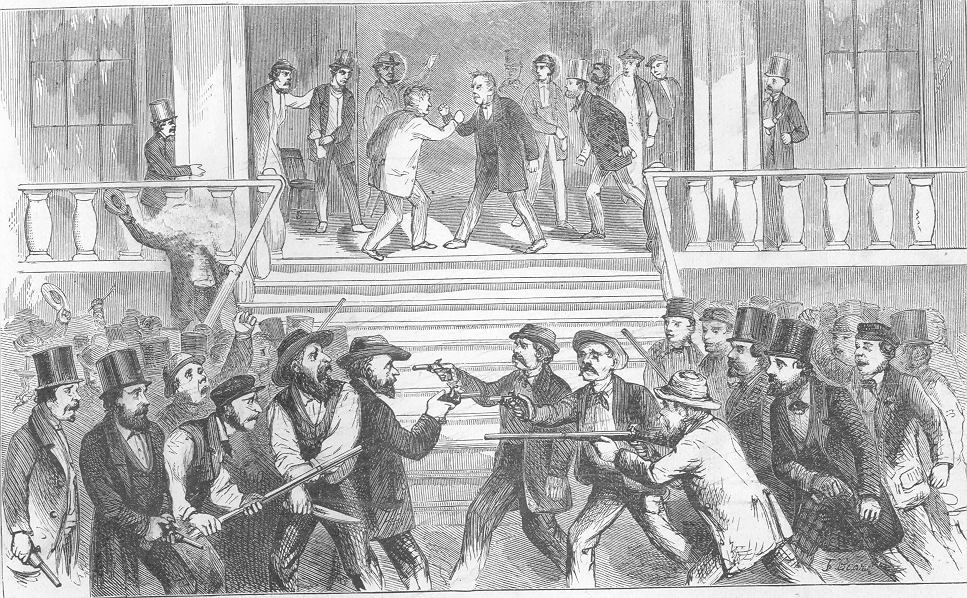
Colorado City was just beginning to grow into its intended ‘Gateway to the Gold’ country - after its founding August 12th, 1859 - when signs of the troubles already starting up back East began to emerge in the west.
It helps to understand that the vast majority of ‘Pikes Peak or Bust’ gold rushers travelled either the North Platte river route northeast of Denver into Colorado Territory, or followed the southern Arkansas River route. The southern route first became busy because the first gold had been panned out in 1858 along Cherry Creek that flowed north west from the Palmer Divide by a party of southerners headed by Green Russell from Georgia, which had some gold. They travelled north from the Arkansas via the Cherokee Trail that lay east of the Black Forest. There were secessionists among them.
The larger number of gold and fortune seekers came by the north Platte route. Most tended to be pro-union from more northern states. Denver and Auroria grew faster than Colorado City, 70 miles south and 40 miles from the southern Arkansas River which branched into Fountain Creek that flowed through Colorado City down Ute Pass.
By 1860 the first rough census taken in Colorado showed that while 18,000 were northerners 6,000 were from the South. They were outnumbered, but armed quarrels about sessesion were frequent. The Criterion Saloon in Denver became a hangout for sessesionists. There were several formal duels.
Five hundred spectators lined up on the banks of Cherry Creek to see Park McClure shoot it out with Colt revolvers with Richard Whitsett, outspoken Unionist. McClure, who had been appointed by southern sympathizer President Buchanan as Postmaster, was wounded in the hip. Shortly after Fort Sumpter was fired on, a number of men raised the ‘Stars and Bars’ flag over a Denver store next to the Criterion. A meelee ensued before an intrepid blacksmith named Logan climbed up and brought the flag down. He later became a Captain in the 1st Colorado Volunteer Regiment. At a large festive 4th of July picnic gathering near Pueblo, someone put up a Stars and Stripes American flag, whereupon a huge argument started resulting in an armed standoff between the more numerically superior Southerners and fewer Northerners. Finally cooler heads prevailed and the flag stayed up. For now.
Yet gold rush commerce went on. The Colorado City Land Company had been formed, largely by Denver investors listening to Anthony Bott, who had tried and failed in late 1858 to start a town near Fountain Creek, 70 miles south. One of them, W.P. McClure - a sessesionist - appeared on the Fosdick Plat as a Director of the Company that was staked out as ‘Colorado City’ at Pikes Peak,. For a time he was even the Secretary of the El Paso Claim Club, which recorded the first deeds of Colorado City in 1860 and 1861 in the absence of any local government offices. He had been trained as a Lawyer. But he was an extreme secessionist.
The outnumbered rebels went underground. And soon were holding up stagecoaches and supply trains for money and guns as Confederate guerillas.
There even arose a Confederate training place at Mace's Hole - near today's Buleah, Colorado.
Colorado City was caught in the middle, physically and politically, though it eventually became strong Unionist.
